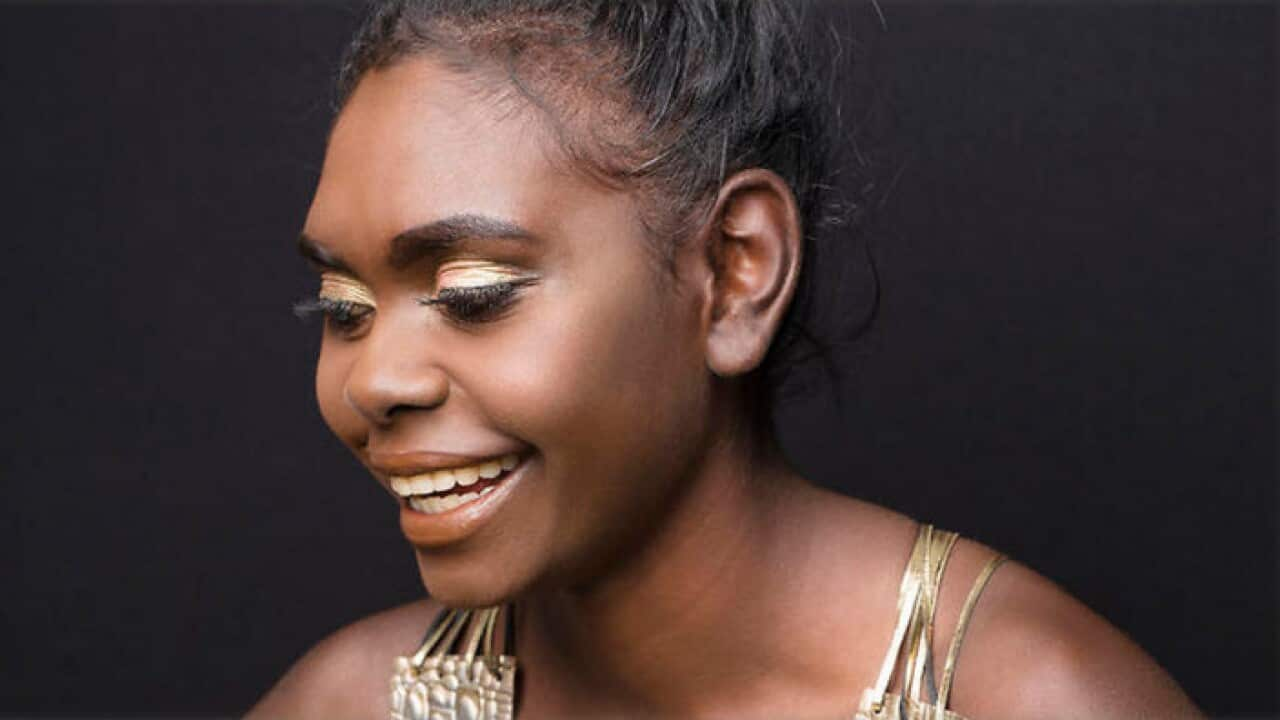In 1993, Elaine George became the first Aboriginal model to appear on the cover of Vogue magazine.
At a time when the covers were plastered with exclusively white waif-thin models in the style of Kate Moss, Elaine’s cover was among the first to put women of colour front and centre.
However, it wasn’t without controversy. Former editor Kristie Clemins claimed Vogue Australia for the blown out photo which made Elaine’s skin appear lighter than in reality.
While the moment was celebrated and the magazine’s sales rose that month, it wasn’t until that another Indigenous model would grace the glossy cover.
Discovered at age 11 through Dolly magazine’s modelling workshops Samantha Harris has become a household name, modelling for David Jones as well as international designers.
I spent my childhood wondering why you had to have blonde hair and blue eyes to do well in modelling competitions, so I'm proud that a girl with my looks might make it.
Headlining the runway at both the Australian and New York fashion weeks, Samantha has become a role model for other young Indigenous models and has opened up the industry to increased diversity.
Today the opportunities for Indigenous models are increasing, although there is still a long way to go. Many modelling agencies have at least one or two models and former model Kira-Lee Dargin has begun an exclusive agency: .
Inspired by the discrimination she often faced from casting directors over her aboriginality, she told about the purpose of the agency.
“It's about giving Indigenous people a chance and breaking stereotypes. By solely representing Aboriginal models, we're able to showcase a variety of looks while holding cultural ties and Aboriginality in common.”
Ms Dargin claimed Australia was still behind the times compared to London, New York and Paris when it comes to embracing diversity. She claimed around ten per cent of the women strutting the runway at New York Fashion Week were women of colour compared to two or three at Australian events.
The internet has also exposed agencies to talent from regional and remote Australia. These days a Facebook like and an Instagram post can lead to offers from metropolitan companies keen to find the next cover-girl or runway star.
The boys are also not missing out. Former rugby league player Casey Conway has made a seamless switch to swimwear modelling after a shoulder injury forced him onto the sidelines.
The growth of events such as and regional fashion shows have allowed up-and-coming models a chance to strut their stuff in front of scouts and given under-the-radar Indigenous designers to showcase their work to an ever widening audience.
The glamorous sphere of Miss World Australia pageants has also seen an increased participation of Indigenous competitors.
In 1999, Kathryn Hay became the first Indigenous woman to win the title of Miss Australia. The Tasmanian born model who traces her heritage from Western Australia, then went on to represent Australia at the Miss World pageant.
Proving true the competition’s motto ‘beauty with a purpose’, in 2002 she become the first women of Aboriginal heritage elected to the State Parliament of Tasmania, representing the electorate of Bass until 2006.
Last year’s Miss World saw three Indigenous finalists: Nyima McNamara, Cheyenne Chadderton and Biara Martin. The girls were all graduates of , set up by stylist Sylvia Giacci.
The girls were all graduates of , set up by stylist Sylvia Giacci.

Nyima McNamara, Cheyenne Chadderton and Biara Martin at the Miss World Australia final in 2015. Source: Dreamtime Project
The empowerment project runs modelling and life coaching seminars for girls from Perth and regional and remote communities, many of home have relocated to study. With support from family and friends the Project has been able to create a community which fosters confidence and creativity.
“Fashion and the arts is a very powerful medium to build confidence and empowerment… As a former model myself, I understand how modelling can build your self-esteem.”
Last year a cohort of models travelled to New York for Fashion Week. “New York was an incredible experience for everyone involved and to be able to give our young women this opportunity of a life time was life changing.”
Many of the graduates have since signed with modelling agencies and are setting their sights on professional careers.
With such role models and support Indigenous models continue to take to the stage and challenge the diversity of the fashion and modelling industry. As the numbers of professional models grows, success stories such as Samantha Harris and Magnolia Maymurru will hopefully be only the beginning of a fashion and cultural revolution.










